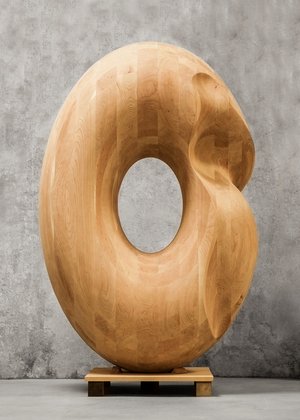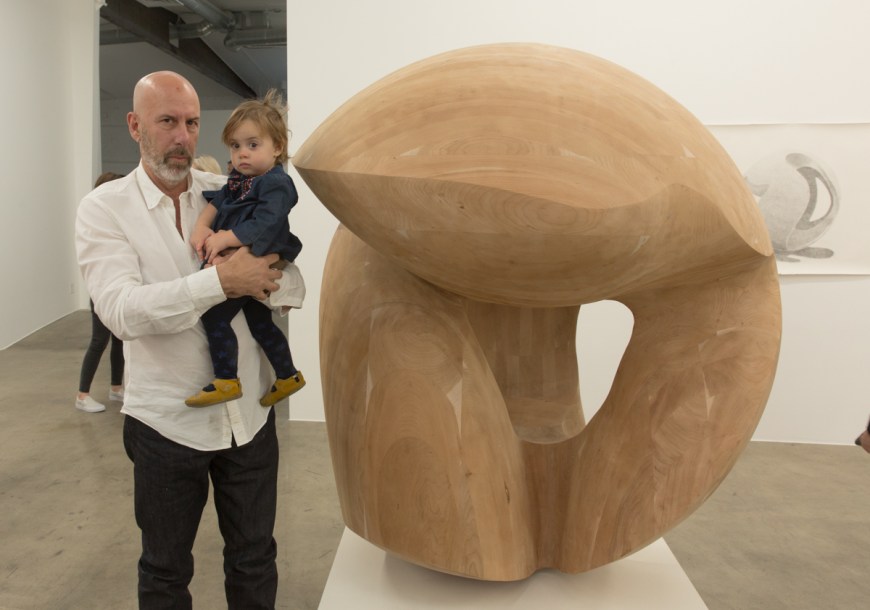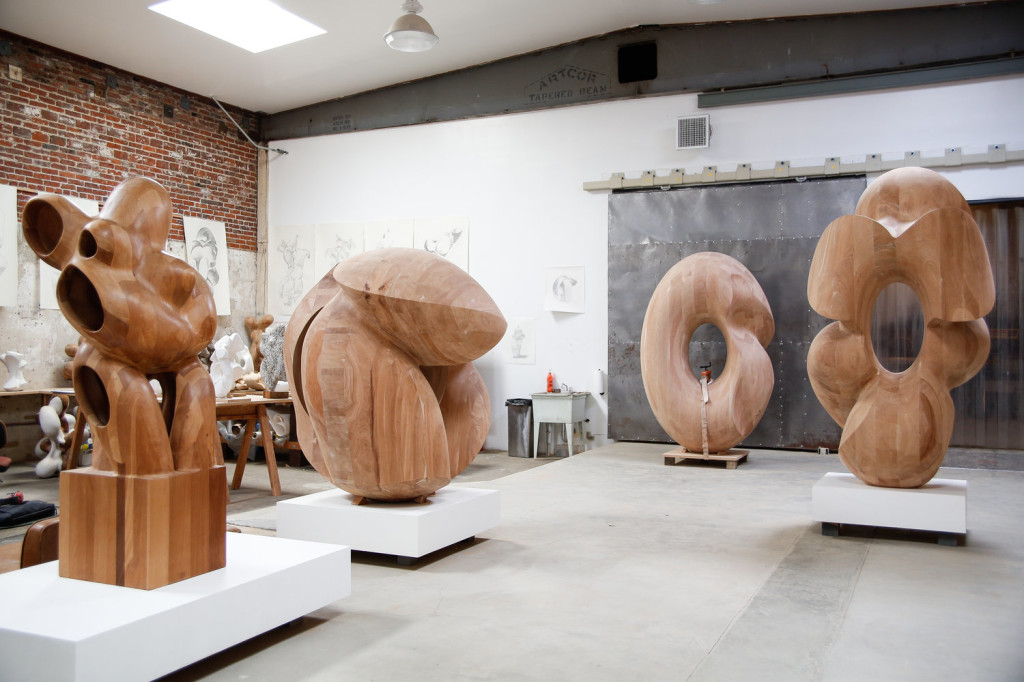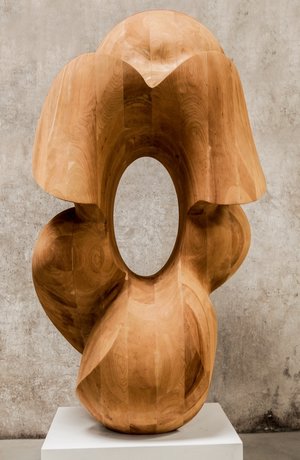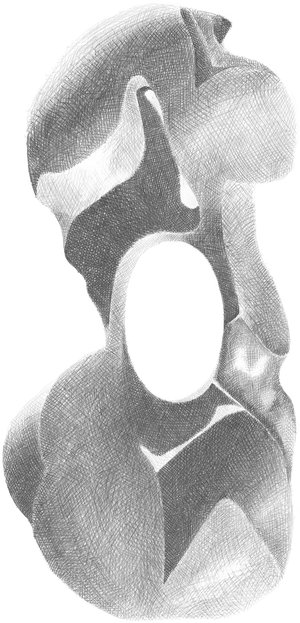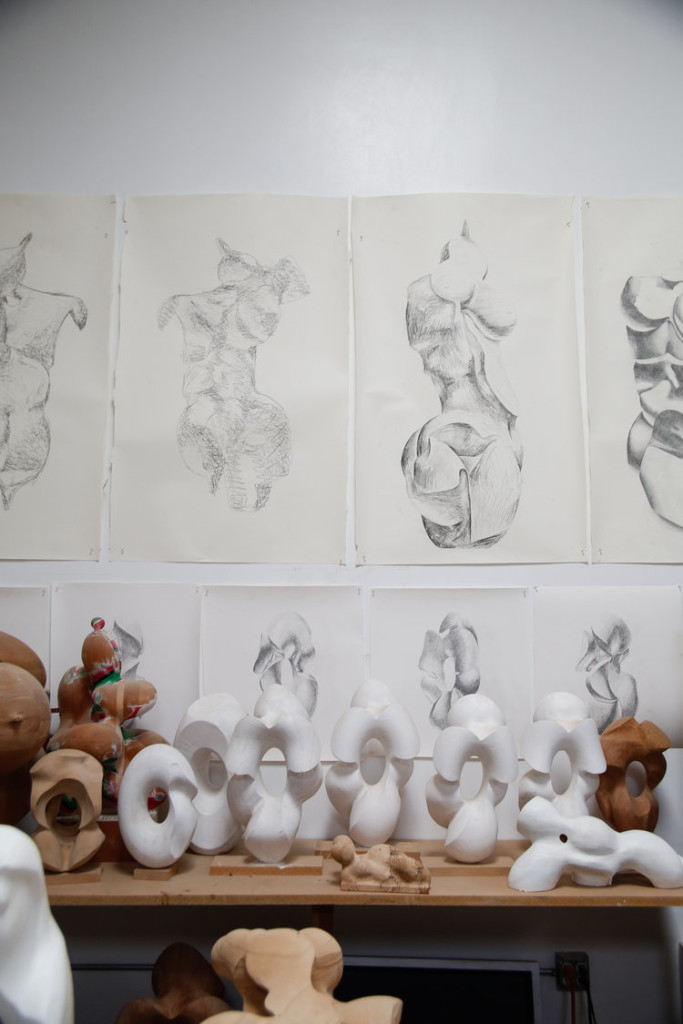Douglas Tausik Ryder creates wooden sculptures that are all about texture — texture that is both physical and emotional, a visual heft that cries out for the connection of touch.
The artist with his work, “Venus,” and his daughter, at Jason Vass in 2016.
I first saw Tausik Ryder’s work in a group show at DTLA’s Jason Vass – where he will have a solo exhibition in the fall – and was struck by the sense of emotional narrative in his work. That was over a year ago, when a piece of the artist’s in that show, “Venus,” was newly created as a tribute to Tausik Ryder’s wife’s pregnancy. He credits that work with changing his approach to sculpture, saying “This piece came out a little differently…thought and emotion united.”
Flowing, sinuous, mysteriously soft-looking, and somehow intuitively feminine, the piece, like much of Ryder’s work, is both physically impressive and contained, as if he were concealing a kind of poetry within it. That aspect might be the most compelling part of his aesthetic: his work shimmers with some secret thing longing to break free from within the smooth and modulated surfaces.
Tausik Ryder discusses his work as being in “the language of dreams,” and reveals that he explores how “unconscious processes express themselves…” The unconscious and dream-like in his works are the very texture of them: while one could discuss the smoothness, the lack of harsh edges, the abstract constructs of his work itself in terms of texture, the strongest textural aspect of all is unseen: the mystery that seems to be throbbing, just out of sight, within his work.
The artist describes his work using language describing a conflict “within ourselves” as biomorphic and animalistic versus geometric and idealistic. His sculptures are designed to express that dichotomy, to reveal the ability to expand, stretch, and reshape to fit it.
Deceptively simple forms create profound images; there is a solidity that seems timeless in Ryder’s work. His “Outburst” seems to have imploded from within; the oval open space at it’s center has a floral aspect, or that of an exploded planet. The viewer can cull his own narrative from Tausik Ryder’s work, or simply observe at face value: these are elegant, symbolic pieces that defy easy categorization.
Another aspect of Tausik Ryder’s work that fascinates is the fact that he is creating large-sized wooden sculptures using newly self-taught G-code and machining techniques. He relies on these tech methods to create the “look and feel” of traditional sculpture.
He has found the future and shaped it, melding natural materials and warm meaning with cooly geometric puzzle pieces. Some of his works resemble sea creatures, nautilus, perhaps. Others look like alien life forms, or embrace the shape of the human body, symbolic stand-ins for living creatures.
The works are both innately alive and remotely abstract; cool, smooth, smoldering with intensity beneath the surface. The medium is wood if wood were petrified liquid.
We as viewers are caught in Tausik Ryder’s dream state, in a realm of touchable lucid visions, clearly defined – with a definition that tugs at the eye and heart, just out of reach.
- Genie Davis; photos courtesy of the artist and by Jack Burke



